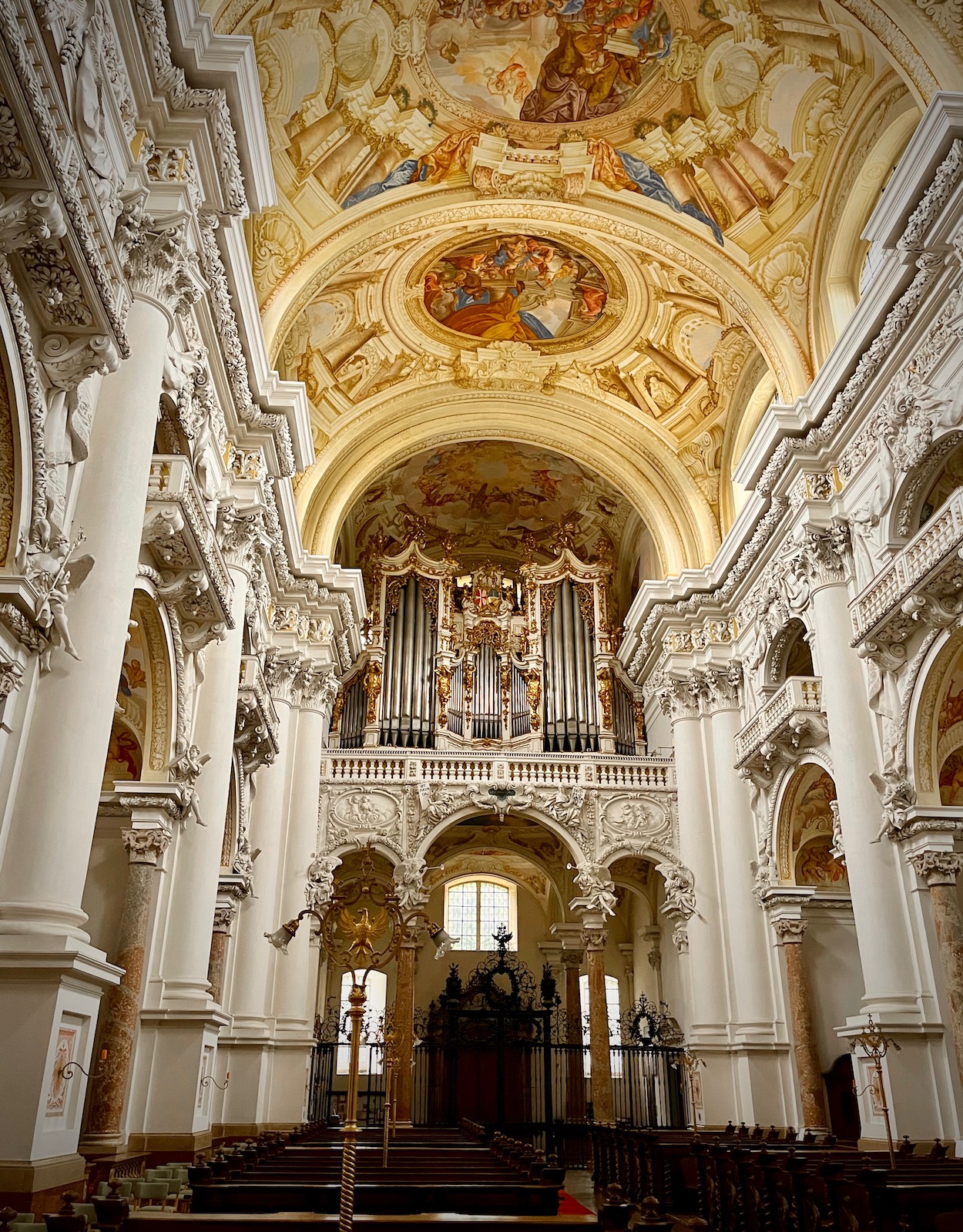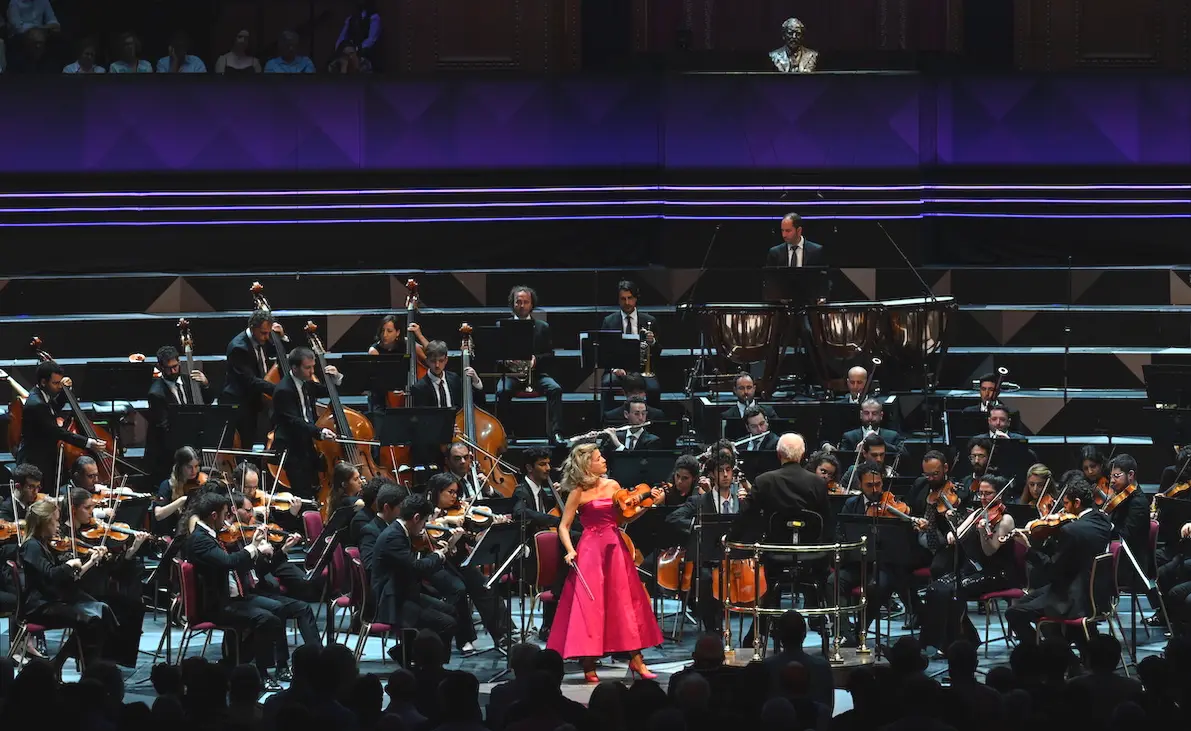PROM 56 2024 BRUCKNER Os Justi, Locus iste, Christus factus est, Symphony No.5 in B flat major
A visit by the Berlin Philharmonic Orchestra to the BBC Proms is guaranteed to be one of the festival’s highlights. I think their visit on Saturday 31st of August and Sunday 1st of September will be their 34th time they appear at the Proms. I’m particularly keen to hear conductor Kirill Petrenko ‘s take on Anton Bruckner’s Symphony No.5.
This is the text of the short podcast. For the actual podcast, which features audio of the interview clips and some music, I recommend my main website:www.albertehrnrooth.com/
200 years ago on the 4th of September Anton Bruckner was born in the village of Ansfelden, not far from Linz,in Upper Austria. I think it’s fair to say that Anton was a pretty weird person. He liked to hang around in cemeteries. When Beethoven and Schubert’s graves were moved from Währing Allgemeiner Friedhof to the new Vienna Central Cemetery, Bruckner made sure to witness the occasion, so that he could take a closer look at the composers’, well, decomposed bodies. He is said to have kissed Beethoven’s skull. But that’s probably just a malicious rumour.
Bruckner suffered from arithmomania, a counting obsession, and would count the number of bricks in a building, the leaves on a tree and note down how many prayers he had said in a day. It seems quite likely that he suffered from an obsessive-compulsive disorder. He had his rituals and on top of that he was fairly naïve, not to say Weltfremd. He was often ridiculed for his dress sense, which was deemed provincial, shabby and extremely unfashionable. His interest in women half his age, in the end nearly 40 years younger than him, is a rather disturbing characteristic.
JOHANNES FRITZSCH: With some composers it’s quite easy to fit the pieces they wrote to their biography. What you read about him is strange. He was a petty person, very narrow minded in day-to-day business. Very strange in his relationships with other human beings, including women. All those shortcomings in his life you find in his music. There’s a huge and unbelievable deepfelt longing for something else. That is in the ninth symphony extremely strong. You look at the second theme in the first movement, that is all longing for something. You might say that it is longing for some spiritual aspect but there is so much human being in it, it can break your heart if you listen to it. This poor man poured out his heart in the score. The eigth symphony, third movement is very similar.
I had a Zoom call with the German conductor Johannes Fritzsch. He used to be Chief Conductor of the Queensland Symphony Orchestra and he is also the former Chief Conductor of the Graz Opera and the Graz Philharmonic orchestra. Why is that relevant? Because Bruckner’s Fifth Symphony was premiered in Graz in Austria in April 1894.
JOHANNES FRITZSCH: The last time I did almost all the Bruckner symphonies, I did 4,5,6, 7 and 8 with my orchestra in Graz, when I was chief conductor with the opera company there. Graz was the place were Bruckner’s Fifth was first performed. They have a different inner connection to it. For instance, half of the people or even more are catholic. They go to church, they hear the sacred music. They hear the music come and going with the service. They are close to that kind of music. They also have the emotional connection to it. That makes it a bit easier.
That first orchestral performance of the Fifth Symphony was a version that had been re-orchestrated by Franz Schalk, who was a former student of Bruckner. But the Schalk adaptation was probably not approved by the composer, who was prevented from attending the premiere because of illness. The worst thing about the Schalk version is that it cuts 122 bars of the finale, thereby shortening the work by at least 15 minutes, if not more.
MUSIC Adagio Fifth Symphony Eugen Jochum
Right from the start of the Fifth Symphony it’s clear that we’re dealing with something special. This is the only Bruckner symphony that starts with a slow, no, super-slow introduction. Pizzicati in the lower strings . This effect will return in the Adagio, the second movement. After the plucked notes intro the violins play a contrapunctual phrase that is quite reminiscent of the beginning of Pergolesi’s Stabat Mater. Next we get a typical Bruckner fanfare, followed by a choral type melody.
I’m not going to analyse the whole symphony, but I want to draw your attention to the Scherzo where a number of very good and even famous conductors have gone wrong, or simply didn’t understand Bruckner’s intentions.
Bruckner ‘s music is deeply rooted in Upper Austrian folk music and Catholic choral music. He clearly loved the polka, a dance that became all the rage in Bohemia and later all over Europe in the 19th century. Bruckner’s fondness for this dance with a 2/4 time signature pops up in most Bruckner symphonies.
MARKUS POSCHNER Diese Polka und Kirche- Choralmusik, das sind seine Oberösterreichische Wurzeln. Für mich in eine Partitur, man muß es erkennen weil ich weiß das ist eine Polka, hab ich sofort Automatisch eine eigene Phrasierung, eine ganz besondere Art von Tempo. Das ist alles nicht aufgeschrieben in Sinne: du musst hier das Tempo ändern, du musst so phrasieren, steht nicht da. Wenn man nicht weiß das ist eine Polka und wie man eine Polka spielt in Oberösterreich, dann glaube ich ist es schwierig zu verstehen daß was Bruckner schreibt.’
We heard the German conductor Markus Poschner, who has recorded all 19 different versions of Bruckner’s eleven symphonies with his ensemble, the Bruckner Orchestra Linz and the ORF Vienna Radio Symphony Orchestra Vienna. Poschner says that it’s not mentioned in the score that a tempo is intended, but if you know your Upper Austria folk music, you immediately recognise the lively and joyful polka bounce. Let’s first listen to how I think it should not be played. This is a passage early on in the Scherzo.
MUSIC Van Beinum Bruckner Scherzo Symphony 5
We heard Eduard van Beinum with the Concertgebouw Orchestra. It was Van Beinum who introduced the orchestra to the music of Bruckner. But I reckon he wasn’t much of a mover on the dance floor. Let’s listen to how Eugen Jochum approaches the same passage with same orchestra.
MUSIC YouTube Jochum Bruckner In at 40:15 – fade under at 40’43
Jochum’s tempo is quicker and above all, he makes the passage dance, as well as joyous. To quote Jochum: “The staccati must be very short, like a tapping. There must be something eerie about the whole. At the second tempo marking (“significantly slower”), a really high-spirited Upper Austrian peasant dance strikes up: here the crotchets marked with an arrow-head should be rather short and playfully marked, each note given a slight accent.¨
Don’t get me wrong, Eduard van Beinum was a good conductor and he’s been largely forgotten, but Jochum, who together with Bernard Haitink became the Concertgebouw Orchestra’s chief conductor after van Beinum, Jochum was the Bruckner interpreter par excellence. Just ask Johannes Fritzsch who was lucky to hear him quite a few times in Dresden.
JOHANNES FRITZSCH I as a student heard Eugen Jochum and he recorded all the symphonies with the (Staats) kapelle. He loved that orchestra and their way to play it. I studied in Dresden from 1976-82 and Jochum came, and he was already quite an old man and I heard some of the symphonies under his direction and that impressed me very much. I started studying trumpet and my teacher was the principal trumpet player from the Staatskapelle. When we had orchestra studies I had to play for him all the main motives of the Bruckner symphonies which is often in the trumpet. He had such a clear idea of how you should play it, third symphony: (sings the Ti dam-pam motif). We had a whole book with Bruckner excerpts and I had to study and play it. I think some of my understanding, feeling comes from that time when I was 16,17,18 playing that music on the trumpet and then going to the concert listening to Eugen Jochum conducting the beautiful Staatskapelle Dresden.
The Berlin Phil’s Bruckner concert kicks off with three motets, followed by the Fifth Symphony. There’s no interval.
If you can’t physically attend the Bruckner concert, you can listen to it live on BBC 3. If you live in the UK you can find all concerts on the BBC Sounds App where most of them are available at least for a month after the event and in some cases even longer.




